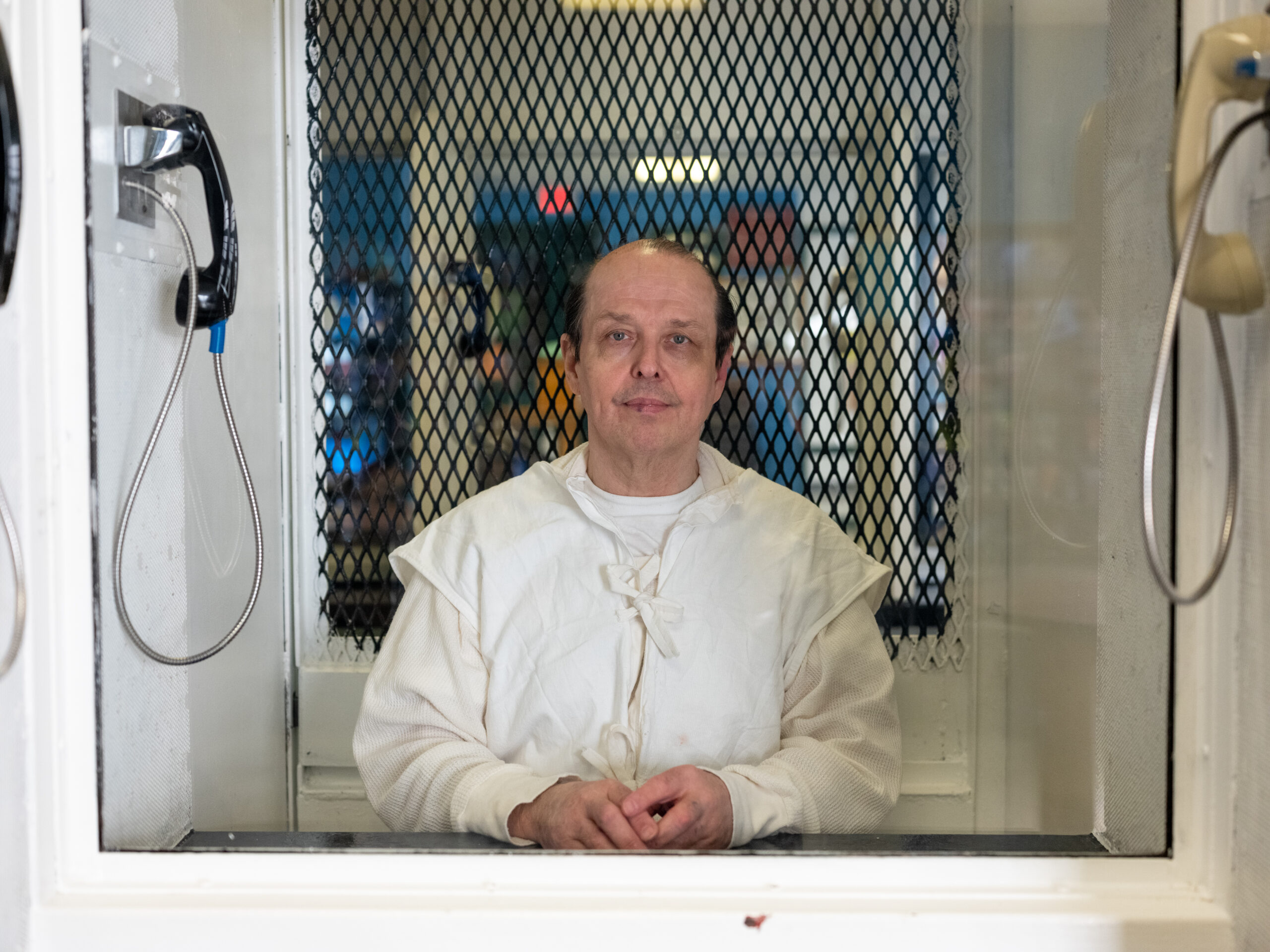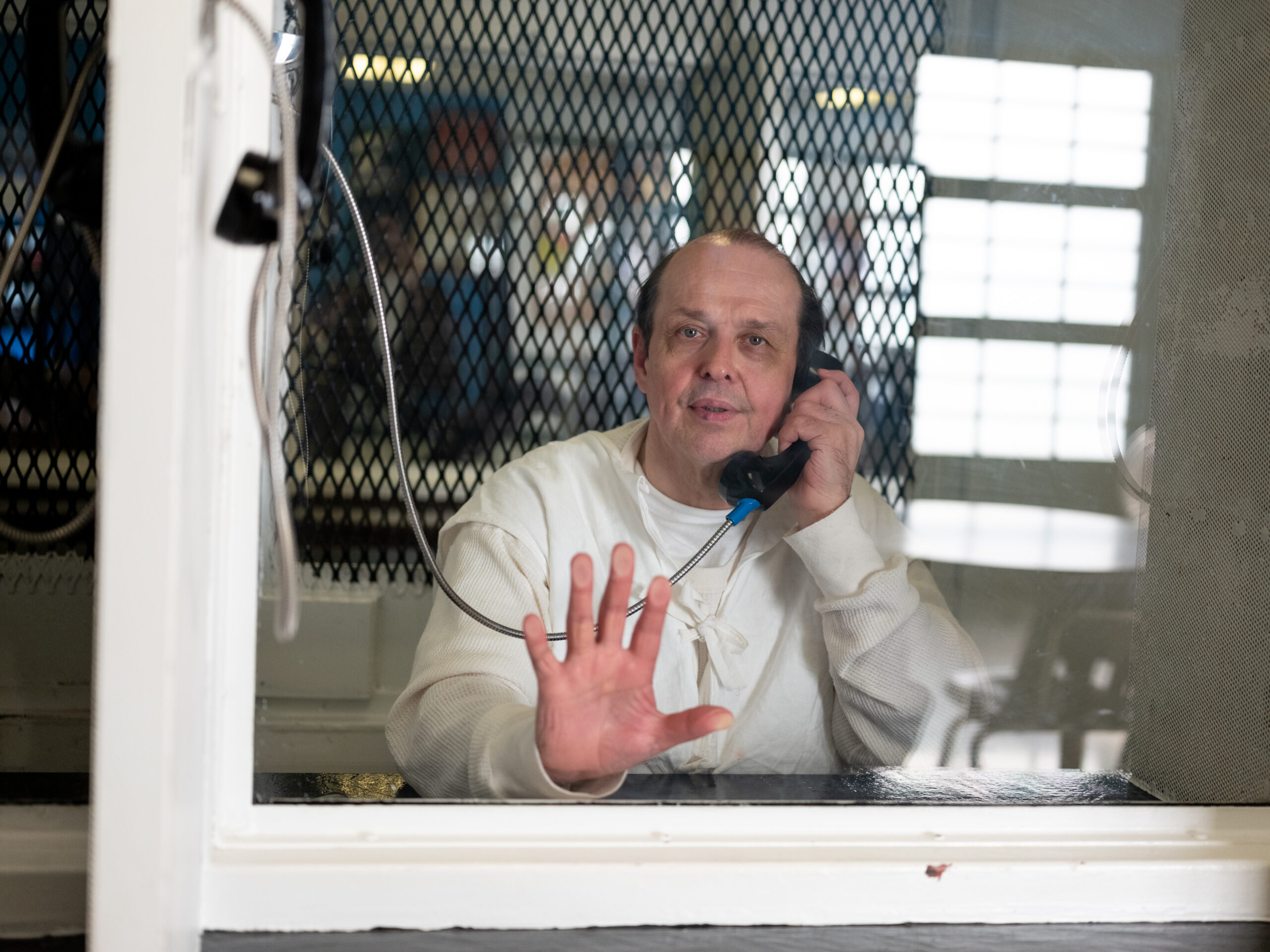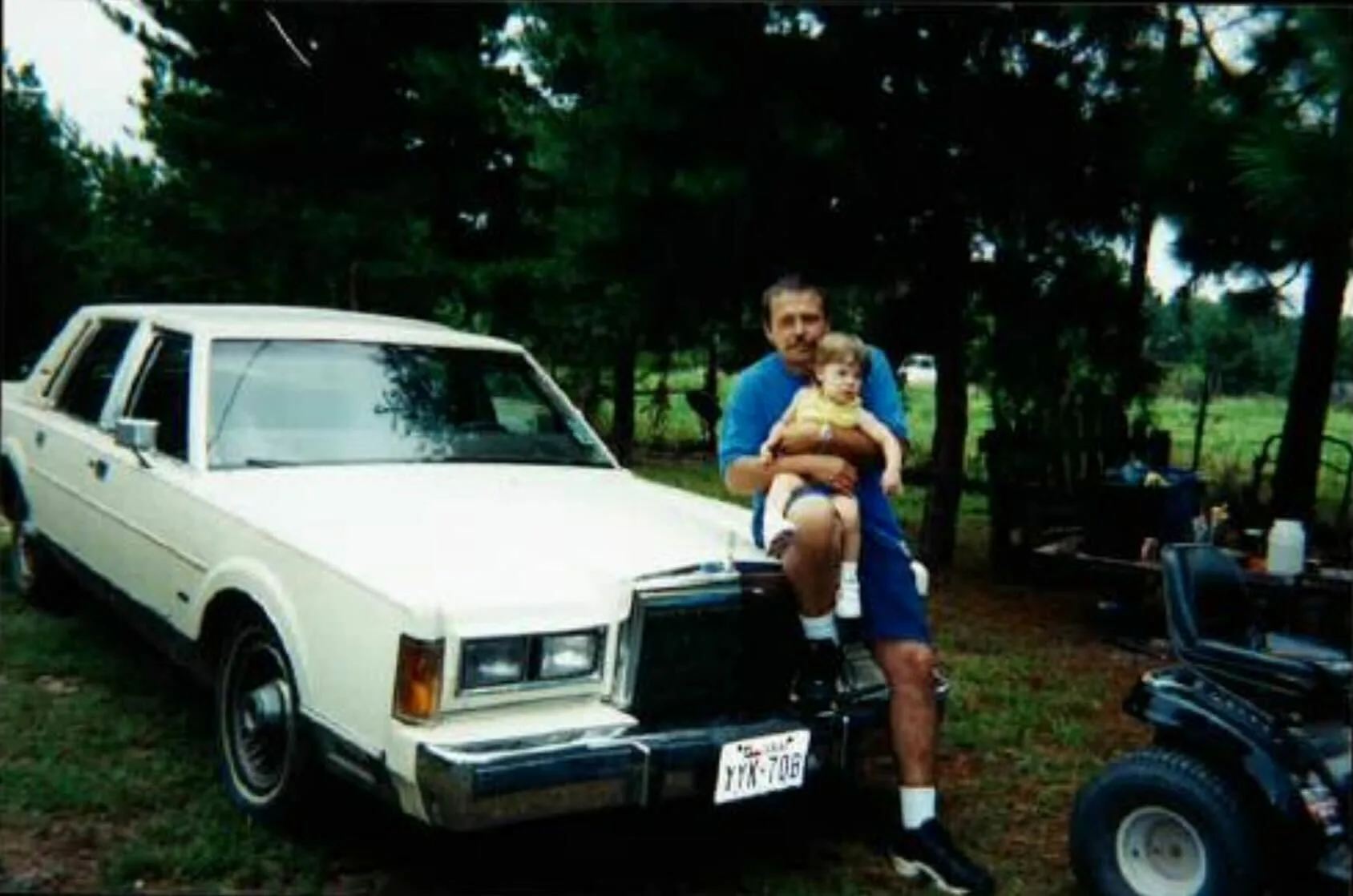Virginia Exonerates Marvin Grimm, Jr. in 1975 Murder Case After 45 Years of Wrongful Incarceration
Mr. Grimm served more years in prison than any client exonerated by the Innocence Project.
Exoneration 06.21.24 By Innocence Staff
Richmond, Virginia (June 21, 2024) — The Virginia Court of Appeals exonerated Marvin Grimm, Jr., 48 years after he was wrongly convicted of the murder and sexual assault of a young boy in Richmond. The court issued a writ of actual innocence, officially clearing Mr. Grimm of the crime, based on new evidence including DNA testing and advances in false confession research.
Mr. Grimm spent 45 years wrongly incarcerated – more time in prison than any client exonerated by the Innocence Project – for a crime he did not commit. He was released in 2020 on parole and required to register as a sex offender despite his innocence.
Mr. Grimm’s 1976 conviction hinged on a false confession, which was coerced under threat of the death penalty, and forensic evidence linked to Mary Jane Burton, a senior forensic analyst at Virginia’s state crime lab whose work has been mired in controversy for the last two decades. Ms. Burton routinely saved forensic evidence in her notebook rather than return it to the relevant law enforcement agency as required by protocol. Following the exoneration of Innocence Project client and Board member Marvin Anderson, whose wrongful conviction for rape was overturned after DNA testing of swabs in Ms. Burton’s notebook, a state audit of other Virginia serology cases led to the exoneration of approximately another dozen people.
Years of post-conviction litigation and appeals by the Innocence Project, as well as lobbying efforts by the Innocence Project’s policy department to change Virginia laws allowing access to post-conviction DNA testing, revealed new evidence of Mr. Grimm’s innocence.
First, at the time of Mr. Grimm’s conviction, Virginia used hair microscopy — a method of hair comparison, whose validity has been questioned since the 2009 National Academies of Sciences, Engineering, and Medicine Report, “Strengthening Forensic Science in the United States: A Path Forward.” Ms. Burton had claimed that eight hairs of the young boy who was murdered were found in Mr. Grimm’s car and on his coat. New DNA analysis of the hairs showed that none of the hairs collected matched the boy’s DNA and that seven of the hairs had different DNA profiles, indicating that they had been shed by seven different people.
Second, the deputy chief medical examiner, Dr. Marcella Fierro, erroneously claimed that a glob of white substance observed in the rear of the child’s throat was semen. Dr. Fierro swabbed the white substance and claimed she saw sperm upon microscopic inspection. Post-conviction, microscopic examination by three laboratories of the liquid recovered from the same swabs revealed there was no sperm present. Additionally, new DNA testing proved that the swabbed material only contained the child’s DNA. Currently, the Virginia Department of Forensic Sciences expert believes the white substance was most likely phlegm.
Third, the state’s toxicology report revealed quantities of alcohol and muscle relaxants in the child’s blood and several organs. However, the state crime lab and prosecutors ignored the impact of the toxicology results at the time. Post-conviction analysis of the substance absorption proved Mr. Grimm could not have drugged the boy between the time the child was last seen and sightings of Mr. Grimm after the child was reported missing.
New evidence of Mr. Grimm’s innocence also includes developments in false confession research, which have shown that false confessions are more common when the trial penalty — where a more draconian sentence is threatened if a person accused of a crime exercises their constitutional right to trial — is at play. Twenty-six percent of known exonerees accepted a guilty plea despite their innocence. In Mr. Grimm’s case, he was coerced into a guilty plea after falsely being told he could be sentenced to death if he went to trial and lost. However, his lawyer had failed to communicate that he, in fact, would have been ineligible for the death penalty had he taken the case to trial.
“Mr. Grimm was his own best advocate, seeking DNA testing in the 1980s before the power of DNA to expose wrongful convictions was fully recognized. We are grateful that the Attorney General reviewed the evidence and agreed that Mr. Grimm is innocent. Finally, Mr. Grimm has some measure of justice,” said Susan Friedman, Mr. Grimm’s former Innocence Project attorney.

Marvin Grimm at his 1973 graduation (Image: Courtesy of Marvin Grimm)
A False Confession
In November 1975, a mother reported her young son, referred to in court documents as C.H, missing. After a search, his body was found on the southern banks of the James River.
Mr. Grimm, who lived in the apartment across from the boy and his family, became a possible suspect due to “previous arguments and encounters” with the boy’s family.
After completing a nine-hour shift at work, Mr. Grimm was brought in for questioning on Dec. 16, 1975. At 2:20 a.m., after approximately nine hours of interrogation and 18 hours after he started his work day, Mr. Grimm gave a recorded statement to police, adopting the theory that had been posited by the deputy medical examiner.
Mr. Grimm falsely confessed that he had abducted, sodomized and murdered C.H. The first eight-plus hours of his interrogation were intentionally not recorded. Mr. Grimm’s recorded confession also did not make any reference to drugs and alcohol found in C.H.’s system during the autopsy.
“Mr. Grimm’s false confession was demonstrably unreliable,” said Peter Neufeld, who co-founded the Innocence Project and served as one of Mr. Grimm’s attorneys. “The court found that the version of the crime fed to him by the detectives was incompatible with and contradicted by all the scientific evidence.”
On March 10, 1976, in exchange for the state agreeing not to seek the death penalty, Mr. Grimm pleaded guilty to murder, sodomy by force, and abduction with the intent to defile. The circuit court accepted the guilty plea subject to a hearing on the evidence.
The State’s Flawed Case
On March 15, 1976, to satisfy the need for corroboration of the plea, the circuit court heard a summary of the state’s evidence against Mr. Grimm. In addition to testimony from police and Mr. Grimm’s confession, the state presented forensic evidence analyzed by Ms. Burton.
This evidence included Ms. Burton’s lab report with results from microscopic testing of the eight hairs found on Mr. Grimm’s car floorboards and on a child’s sock in the car, as well as on a pea coat found in his apartment. Ms. Burton visually inspected slides made from swabs of the pharynx, epiglottis, esophagus, nasal passage, and oral cavity and a towel recovered from Mr. Grimm’s car that had a stain indicating the presence of what she believed to be sperm. Dr. Fierro, who performed the autopsy, also testified, erroneously, that there was spermatozoa on a “thick white gelatinate material” in C.H.’s mouth.
After hearing this forensic evidence and the testimony from officers who obtained Mr. Grimm’s confession, the circuit court accepted Mr. Grimm’s guilty pleas on all three counts and sentenced him to life in prison on the murder and abduction charges, plus 10 years on the sodomy charge.
New Evidence of Mr. Grimm’s Innocence
After years of post-conviction litigation, in April 2023, attorneys from the Innocence Project and Arnold & Porter submitted a petition for writ of actual innocence before the Virginia Court of Appeals, seeking to vacate Mr. Grimm’s murder conviction based on newly discovered DNA and non-biological evidence.
The Virginia Office of the Attorney General joined the petition. On June 18, 2024, the Virginia Court of Appeals granted the petition, based on the newly discovered evidence, including:
DNA Evidence: In 2011, the Virginia Department of Forensic Science performed DNA analysis of the eight hairs found in Mr. Grimm’s car, a sock in the car, and a peacoat in his apartment that were previously attributed to C.H. Through this testing, C.H. was excluded as the source on six of the eight hairs. Testing on one of the two remaining hairs was inconclusive, and the other lacked sufficient mitochondrial DNA to make a meaningful comparison. Thanks to changes in Virginia law, the two remaining hairs were sent to a private, accredited laboratory that was able to analyze the two remaining hairs. C.H. was excluded as the source of both the hairs, and they were determined to be from different sources.
Post-conviction DNA analysis also eliminated Mr. Grimm as a possible contributor of the genetic material detected in the swabs taken from the epiglottis, esophagus, oral cavity, and non-sperm fractions of the pharynx swabs. Further, examinations by the Virginia Department of Forensic Science and two leading private labs of the white substance that had been collected on swabs found no spermatozoa, disproving the medical examiner’s theory of the case.
Toxicology Report: Dr. Jeffrey Brent, a board-certified medical toxicology physician with a Ph.D. in biochemistry, reviewed the toxicology reports developed during the autopsy of C.H. In conducting this review, Dr. Brent considered the quantities of the substances present in C.H.’s system, the amount of food identified in his stomach, and his physical size. When all these factors are taken together, Dr. Brent concluded it was more probable than not that C.H. ingested the alcohol, chlorzoxazone, and acetaminophen found in his system at least 90 to 150 minutes prior to his death. This timeline of events would have made it impossible for Mr. Grimm to have committed the crime, since it was undisputed that he was alone in his apartment within 75 minutes after the mother of the child claimed she had last seen her child walk off alone into the woods.
A Long Fight to Prove Innocence Post-Conviction
The campaign to prove Mr. Grimm’s innocence was fought in the courtroom and the statehouse.
Mr. Grimm initially requested DNA testing in the late 1980s, but faced a number of hurdles. At that time, Virginia law did not allow post-conviction DNA testing, and a writ of innocence did not exist. Even after the writ of innocence of new biological and non-biological evidence was enacted, it was limited to people who went to trial, and when access to DNA was allowed, it was limited to laboratories in the state of Virginia.
Years of lobbying legislators in Virginia, an effort led by former Innocence Project Directors of Policy Michelle Feldman and Rebecca Brown, the Mid-Atlantic Innocence Project and the Innocence Project at the UVA School of Law, led to changes in Virginia law.
Because of their efforts, Virginia permitted access to post-conviction DNA testing, created a writ of actual innocence, lifted the guilty plea bar, and allowed people accused of crimes to get testing at private, accredited labs.
Mr. Grimm’s exoneration took decades of painstaking investigation and litigation by a long list of attorneys at the Innocence Project and Arnold & Porter, in particular Ms. Friedman and former Innocence Project attorney Olga Akselrod. These two lawyers spent a combined two decades working on behalf of Mr. Grimm. Innocence Project’s Senior Staff Attorney Tim Gumkoski also joined Ms. Friedman. More recently, Mr.Neufeld and Innocence Project’s Director of Special Litigation Vanessa Potkin added their expertise to the Innocence Project team. Arnold & Porter collaborated with the IP for many years, led by Partner Jeffrey Horowitz and now retired Partner Glenn Pogust, Senior Attorney Robert Grass, and Senior Associate Angelique Ciliberti.
The University of Richmond School of Law’s Institute for Actual Innocence, directed by Professor Mary Tate, also supported the legal efforts.
“Working to exonerate Mr. Grimm was truly a team effort involving not only our Arnold & Porter team, but also multiple attorneys over the years from the Innocence Project, and could never have been accomplished without the unwavering support of Marvin’s sisters and entire family.” said Mr. Horowitz.
###
Innocence Project
The Innocence Project works to free the innocent, prevent wrongful convictions, and create fair, compassionate, and equitable systems of justice for everyone. Our work is guided by science and grounded in anti-racism. For more information, please visit www.innocenceproject.org.
Arnold & Porter
Arnold & Porter combines sophisticated regulatory, litigation, and transactional capabilities to resolve clients’ most complex issues. With over 1,000 lawyers practicing in 15 offices worldwide, we offer deep industry experience and an integrated approach that spans more than 40 practice areas. Through multidisciplinary collaboration and focused industry experience, we provide innovative and effective solutions to mitigate risks, address challenges, and achieve successful outcomes.




Leave a Reply
Thank you for visiting us. You can learn more about how we consider cases here. Please avoid sharing any personal information in the comments below and join us in making this a hate-speech free and safe space for everyone.